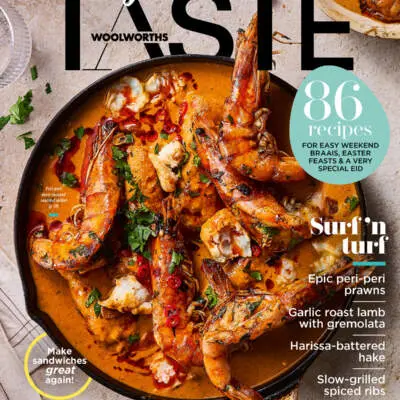Stock up on these pantry staples for oodles of coconut flavour
Oh, how far we’ve come from those humble desiccated coconut days…
Love coconut? Here's what you should add to your pantry cupboard and how you should use them...
COCONUT SUGAR
Traditionally, sweet nectar is manually collected from the cut flowers of the coconut palm, then heated in large woks over open fires where most of the water evaporates and the sticky stuff turns light in colour and becomes crumbly. While originally used to sweeten Asian dishes, Woolies’ coconut sugar granules will add delicious caramel flavour to cakes and sweet treats.
COCONUT MILK
Once the flesh of fresh coconuts has been grated, it’s combined with hot water. The first pressing of the mixture produces coconut cream, while the second pressing results in coconut milk. Use full-cream coconut milk in decadent desserts like rice pudding, and reduced-fat milk in curries, soups and sauces.
DESICCATED COCONUT
An oldie but a goodie, the dried, grated flesh from a coconut is everyone’s favourite in crunchies, granola, lamingtons and Hertzoggies, but also makes an excellent gluten-free savoury crumb. Try coating chicken strips in it instead of breadcrumbs.
COCONUT CREAM
Because it comes from the first pressing of coconut flesh, coconut cream is much higher in fat, so has a much thicker consistency and richer taste. It can be whipped in the same way as dairy cream, making it a great vegan substitute, and it’s also perfect for ice cream.
COCONUT CHUNKS
Woolies’ fresh coconut chunks can be blitzed into smoothies, shaved over fruit salads, grated over porridge bowls, toasted and tossed with spices for the ultimate snack, or simply eaten straight from the tub whenever you fancy.

TOASTED COCONUT CHIPS
Toasting slivers of coconut brings out an intensely nutty, slightly smoky flavour that works equally well in sweet or savoury dishes. Sprinkle these babies over a stack of pancakes with crispy bacon and a drizzle of maple syrup for the best of both worlds.
Toast your own coconut at home: Place shredded fresh coconut in a dry pan and toast over a low heat until golden – this usually takes about ten minutes. Stir often as it burns easily. Alternatively, place the coconut on a baking sheet in a moderate oven for about ten minutes. Enjoy with yoghurt or cooked oats, mix with nuts as an on-the-go snack, or use to garnish bakes.
COCONUT FLOUR
Produced by drying and milling the coconut pulp leftover from coconut milk production, this is a tasty gluten-free alternative to wheat and grain flours in baking. It’ll lend a nutty flavour and slightly crumbly consistency, and fibre to boot!
COCONUT OIL
Extracted from the flesh of mature coconut kernels, or copra, coconut oil is translucent and semi-solid at room temperature. Use as a substitute for butter, or melted to replace oil in baking. Its mild flavour also makes it
a good substitute for cooking oil – especially in Asian dishes such as beef rendang.
COCONUT WATER
Obtained from young, green coconuts, coconut water is slightly sweet with a delicate coconut flavour, making it
a fantastic addition to iced teas and smoothies – if you’re not enjoying it straight from the fridge, that is. Woolies’ coconut water is unsweetened and contains no added preservatives.
FRESH WHOLE COCONUT
Woolies’ whole coconuts take a bit of work to crack but it’s so worth it, because you’re rewarded with coconut water and flesh. And some pretty nifty fruit salad bowls, if you feel like showing off.
Here's how to crack coconuts at home: You don’t have to avoid whole coconuts because you don’t know how to get at the delicious flesh and water inside. Follow these easy steps to tropical bliss...
FIRST, THE WATER...
Find the three “eyes” at the stem end of the coconut. Use a screwdriver to test which one is the softest, then pierce it. Invert the coconut over a bowl to drain the water (shake the coconut if necessary).
THEN THE FLESH...
Firmly tap the coconut using a meat mallet or hammer while rotating it until the shell starts to crack. Split the halves and place them, cut side down, on a flat surface. Tap with the mallet to loosen the flesh, then prise it away from the shell using a butter knife or spoon. Use a vegetable peeler to remove the brown skin if you like (it’s perfectly safe to eat), then grate or chop the flesh.



Comments